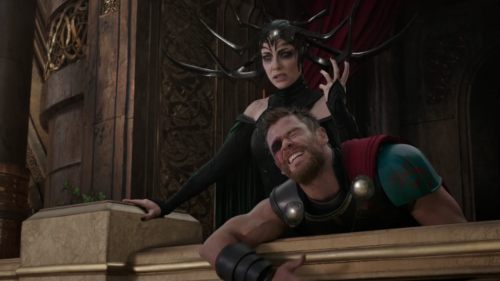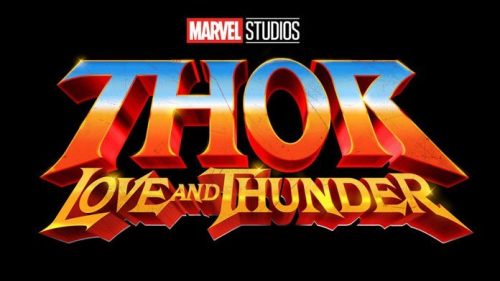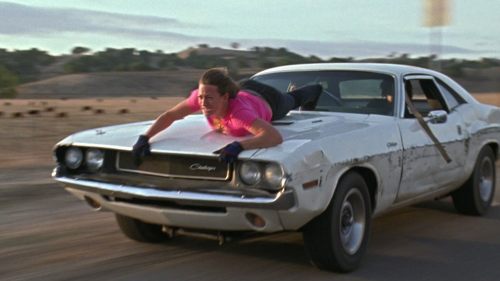Considering the Modern Thor: THE GOD BUTCHER/GODBOMB
Thor: Ragnarok hits American theaters this week. Get your tickets here!
“At last I understand you, little god. The old you, the king, he’s always been fueled by regret. He thinks if he kills me, he can erase his own history of wretched failure. And the young one, the Viking god, he uses arrogance and rage to mask his crippling shame. But you… You I could never quite figure out, until now. You know I’m right. That’s why you fight so hard. Why you try so desperately hard to seem noble. Because you see just how petty and useless your kind truly are. You know what I know. That gods have never created or cared for anything. Except themselves. The god who doubts. Heh. I change my mind. You’re my favorite Thor.” – Gorr the God Butcher, Thor: God of Thunder # 9
Thor: Ragnarok opens stateside this week. If its marketing and early critical responses are accurate, the creative team have successfully told a story of their own while building on and honoring the comics they are adapting. Hela’s schemes, Skurge the Executioner’s finest hour and the apocalyptic power of Surtur are drawn from Walter Simonson’s legendary turn as Thor’s writer and artist. The Hulk’s time as a gladiator on the planet Sakaar is adapted from the Planet Hulk storyline. And Ragnarok’s wonderfully varied design work (particularly its costumes and weapons) and its chocolate and peanut butter blend of science fiction and grand fantasy have a cousin in Esad Ribic and Jason Aaron’s inaugural Thor: God of Thunder story, The God Butcher/Godbomb. It’s Ribic and Aaron’s work (as well as that of guest artist Butch Guice) that I’d like to shine a light on with this piece.
The God Butcher/Godbomb is a wonderful cape comic. Esad Ribic has an excellent command of action. His drawings, which are colored by Ive Svorcina, are painterly without being static. He’s drawing the Norse god of thunder in battle with an alien god who wields an eldritch weapon, but he doesn’t use their immense power as a crutch. Thor’s hammers, axe and sword have weight when swung, thrown or even just carried. Gorr’s weapon, All-Black the Necrosword which pulls double duty as his cloak and armor, looks and feels wrong in just the right way. It isn’t merely black, it’s black without shade or division, an abyss animated and given shape by its wielder’s twisted will. I can’t think of another weapon in comics quite like it, and I’m thrilled that Ragnarok’s interpretation of Hela seems to be wielding it. Thor and Gorr’s clashes are larger than life, but they’re thrilling and bold rather than lifeless. Consider the end of their last battle, when Thor absorbs All-Black the Necrosword and turns it against the disbelieving God Butcher:


Ribic gives a great deal of space to the panel revealing Necro-Thor, since the story has well established what both Thor and All-Black the Necrosword are capable of individually, and their union brings a new level of sheer power to the story. The panel is a period, since Gorr has definitively lost the fight. And, simultaneously, in concert with the two smaller panels on the page, it begins building energy. Thor has All-Black the Necrosword, a weapon made to kill gods. Gorr’s attempt at universal deicide, for all that he’d rage against the reality of it, has turned him into the single most wicked god of all. Ribic devotes the entire next page to releasing the energy he’s built up across both the story and the three-panel grid. The result? Thrilling, gorgeous, tremendously satisfying sequential art.
And Ribic’s talents don’t stop with his superb superhero scale battles. His character and costume work is also very fine.
The God Butcher/Godbomb stars the God of Thunder at three points in his life: Young Thor, Thor the Avenger and King Thor. Each Thor’s body language and costume are distinctly their own, and they still feel like the same man at very different points in his life, rather than separate characters who are supposed to be the same person. Young Thor, hungry for recognition, wears the skin of a wolf he slew in battle. He’s often tense and nervy, and he wears his heart on his sleeve without knowing it. Thor the Avenger prefers a humbler, simpler costume and is far more comfortable in his own skin. He’s given to self-reflection, but not the dour, brooding sort his younger self indulged in. King Thor, worn down by fighting a losing, centuries-long war with Gorr, wears the armor of the All-Father and, until he meets his younger selves, is visibly burdened by it. Like Young Thor, he’s quite prone to brooding. Unlike Young Thor, it isn’t because he’s immature, it’s because he literally has nothing left in his life but Gorr’s brutalities and his own immense regrets. Thor may have a grandiose, superheroic physique, but Ribic makes him recognizably human. And Gorr? Gorr’s a deceptively simple design, one centered around a plain face that allows for an immense range of emotion, a face that’s often highlighted by the contrast between it and the all-consuming darkness of Gorr’s cloak and armor. Given the highs and lows he experiences over the course of his quest to destroy all divinity, his expressiveness is essential to his working as a character. Butch Guice, who drew the issue exploring Gorr’s past, puts the design’s expressiveness to great use, especially when contrasting Gorr’s building rage and misanthropy with the exhausted, despairing faith of his dying people.
The world the Thors and Gorr inhabit is as distinct as they are. Young Thor travels wintry tundra with his Viking friends. Thor the Avenger traverses the cosmos, interviewing living gods. King Thor is as constrained by the ruins of Asgard as he is by his armor and his sorrow. Gorr rules over a dead world where he has enslaved gods to build his Godbomb, where the only luxury and comfort exists in the empty, sterile tower he’s built for the shades of the life he wanted before becoming the God Butcher. The humans and gods the Thors and Gorr encounter are just as varied, from the superbly bearded Vikings to a perpetually irritated librarian to Shadrak, the traumatized, guilt-stricken, de-eyelided God of Kittens and Coconuts, Pancakes and Tambourines Bombs, who looks remarkably like Gorr from a distance, only to prove the furthest thing possible from his tormentor up close.
Esad Ribic is, in other words, a remarkable artist. And Thor: God of Thunder is a superbly drawn comic. After all, when this is one of the more mundane things to happen in the comic, it’s safe to say the artist knows what he’s doing:

It’s also worth noting that earlier in Godbomb, Young Thor uses a different starshark as an improvised bludgeon when he first encounters his later selves.
Cape comics can be pretty wonderful folks.
The Godbutcher/Godbomb’s gorgeous art is matched by its writing. Jason Aaron is one of the bigger names in American comics at the moment, and his body of work has impressive range. He’s done everything from the often comic, occasionally wrenching story of Wolverine’s attempt to rebuild the X-Men as an organization that protects mutant kids and equips them with the tools they’ll need to live healthily and happily in the world rather than a private army (Wolverine and the X-Men) to a scathing crime story set in the modern American south with artist Jason Latour (Southern Bastards).
Aaron’s run on Thor has seen Thor navigate the politics of the nine realms, be deemed unworthy by Mjolnir after learning a horrifying truth from the cosmically powered Nick Fury Sr, watch his cancer-stricken friend and former lover Jane Foster prove worthy of Mjolnir and ultimately resolve to keep doing good even with the horrible truth (it involves Gorr’s creed) and his unworthiness. It’s very good stuff. But, for my money, The God Butcher/Godbomb remains his run’s highlight. Why? Because Aaron eloquently conceives and articulates a vision of Thor that feels current, true and heroic. This is our introduction to Thor the Avenger, the story’s primary hero:

All three of the Thors in The God Butcher/Godbomb stand as refutations of Gorr’s thesis that gods are, without fail, craven, cruel, selfish and better off dead. Thor the Avenger stands out in particular. And a big part of the reason he does is that, as Gorr himself says, Thor doubts. He’s seen a great deal of cruelty and evil done by gods in his life, some of whom he’s related to, some of whom he loves. He knows that he himself, while never evil, had to earn the right to wield Mjolnir’s power by working to do good and learning to look beyond himself. Gorr’s rhetoric is, in a warped way, seductive. On some level, it would be easy to write gods as a people off as worthless and beyond salvation, to excuse their cruelties, betrayals and moral failures as something inherent to their character, rather than actions they’d need to step up and take responsibility for. But, as fellow superhero Kamala “Ms. Marvel” Khan puts it, “Good is not a thing you are. It’s a thing you do.”
Thor may believe that Gorr is right about gods on some level, but he does not stop working to do good anyway. He brings rain to people who Gorr’s rampage left without their protectors. He points those gods freed after Gorr’s defeat who had lost themselves in centuries of slavery towards those same people, so that both parties might be able to help each other heal and rebuild. He’s kind to his younger and older selves, being more self-aware and mentally healthy than either of them, and in the process, he helps them to start towards being better (in Young Thor’s case) and rediscovering life (in King Thor’s case). And all the while, he bears in mind that Gorr, though a cruel, evil hypocrite, didn’t simply pop up one day as a raw bundle of homicide and malignancy. Gorr the mortal had good reason to rage against the heavens, reasons that Gorr the wicked god had twisted into a grotesque monument to his own righteousness.
Thor thwarts Gorr’s attempt at universal deicide, strips him of his power and strikes him down. But, even as he (temporarily) dies from the strain of absorbing both the blast of a bomb built to kill all gods everywhere across all of time and All-Black the Necrosword, he insists that his other selves prove Gorr wrong, not for the sake of the evil god, but for the sake of themselves and their own lives. To his very last, he sees the world beyond himself and urges others to make it better. That’s both an incredibly heroic bit of character and a truth that, even five years after The God Butcher/Godbomb was published, feels urgent. Aaron’s Thor the Avenger, grand though his adventures and life may be, is noble in a recognizable, human way. It’s both a lovely piece of character work and a great example of the superhero’s ability to be a cultural vehicle that encourages folks to do good in the world and work towards a better tomorrow.



